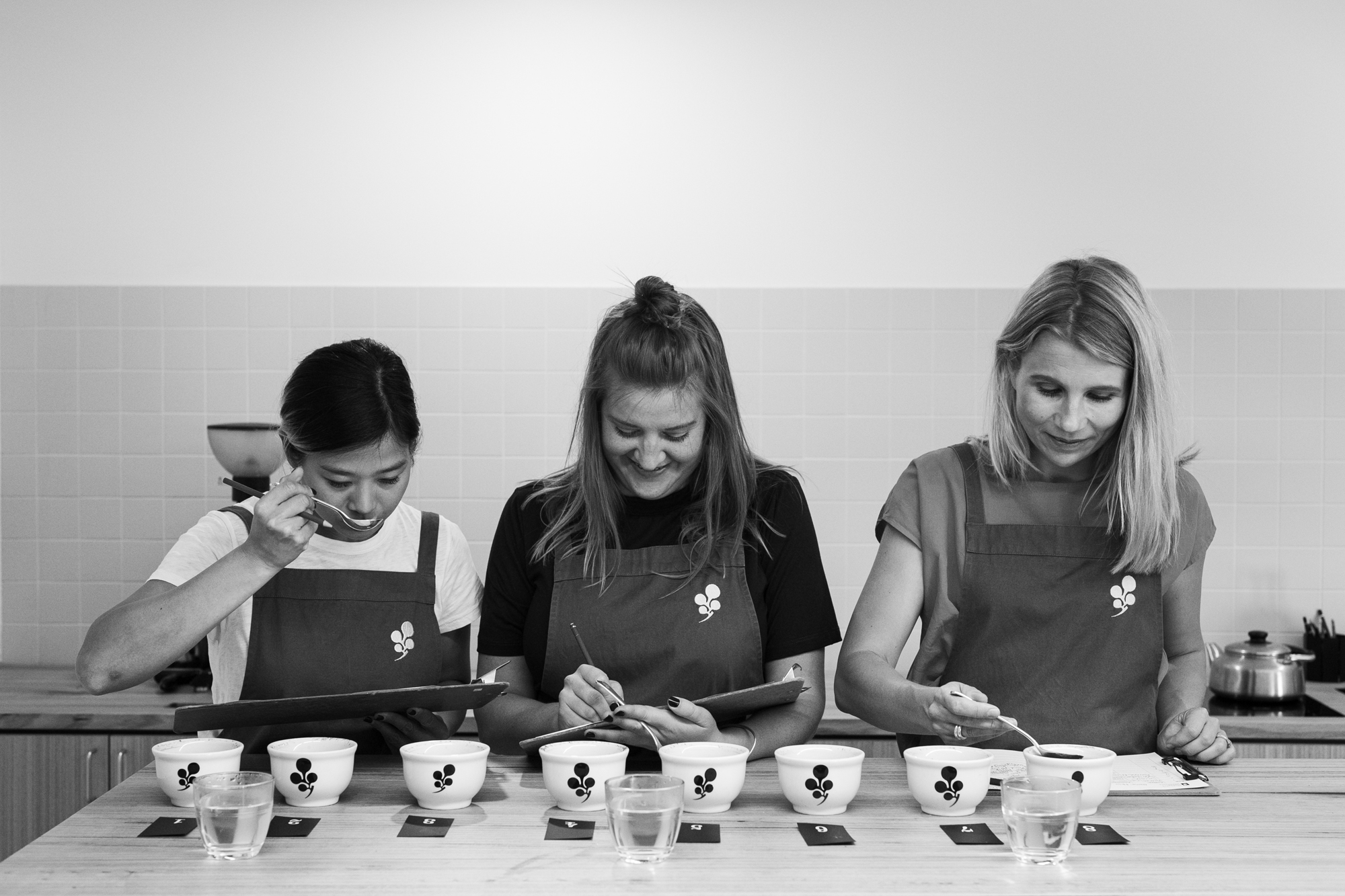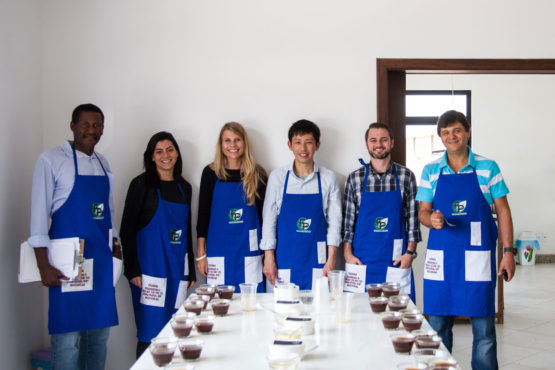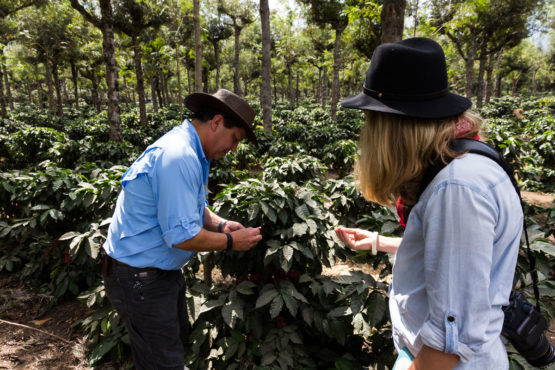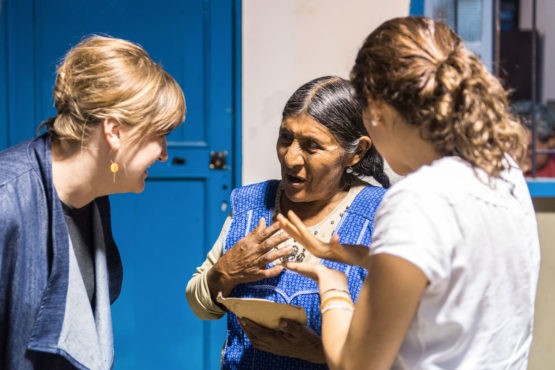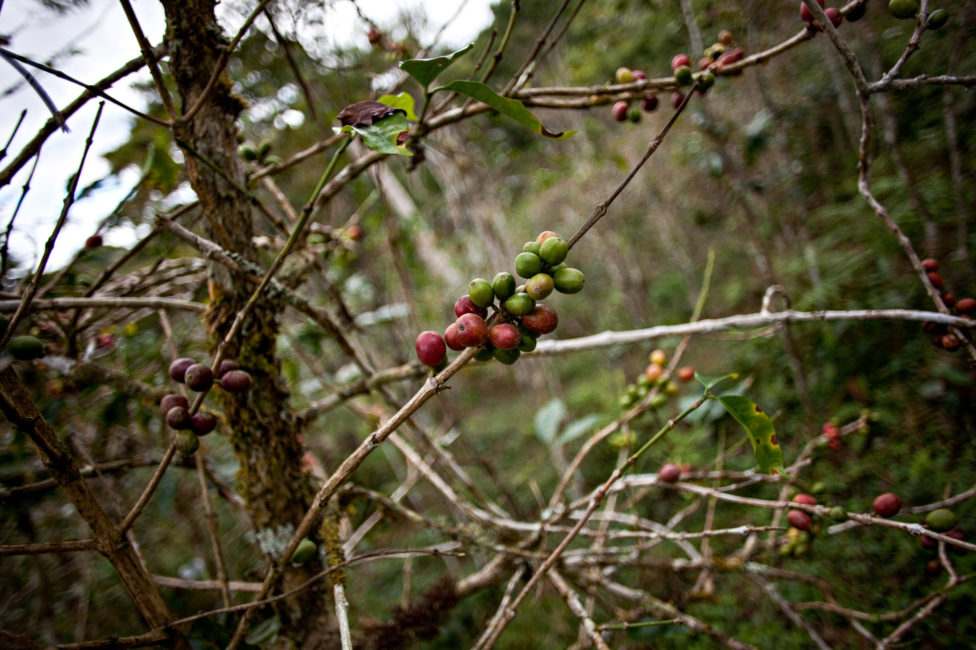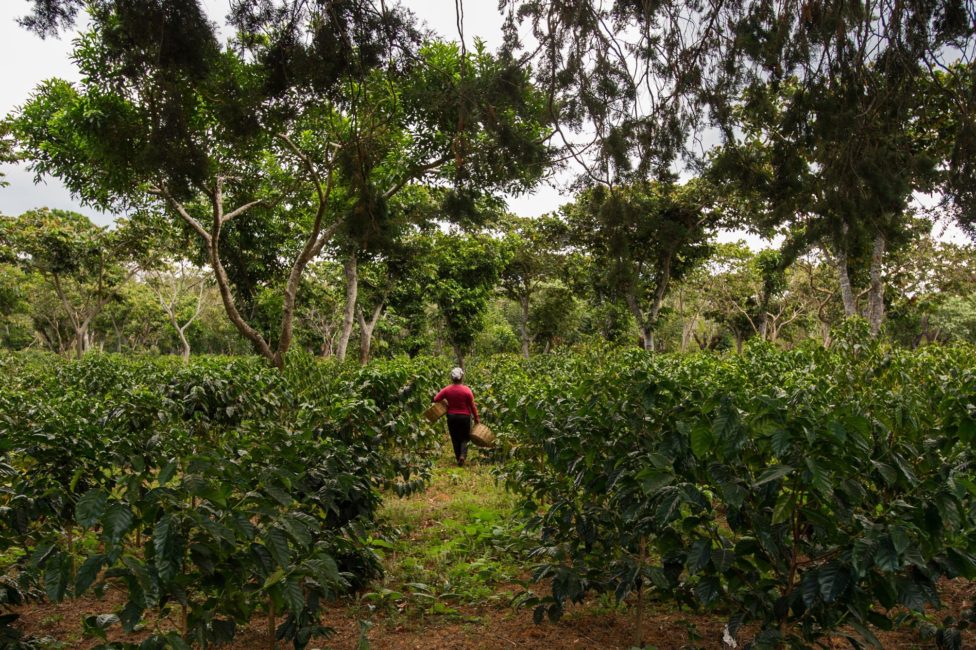How we buy coffee
Melbourne Coffee Merchants believes that everyone in the coffee chain can and should prosper, and that a commitment to paying producers good prices for coffee quality and suitability, regardless of the commodity market fluctuations, is the best way to ensure a sustainable and viable future for coffee farming. We have built our business around these beliefs and stand firmly behind our buying practices.
With so many conversations around coffee pricing taking place right now, we see a great opportunity to share more about Melbourne Coffee Merchants’ buying practices and values. This post explores our approach to coffee sourcing – including who we buy from, how we select and purchase coffee, how we price our coffee, and the ways in which we work with our customers to build better and more sustainable purchasing practices.
From the outset, Melbourne Coffee Merchants has been committed to paying premium prices for the coffees we source (prices that are in no way linked to the C-market) and building long-term and mutually beneficial relationships with our producing partners. Our founding values of quality, transparency and sustainability inform all of our decisions and have a real impact on the way we buy coffee, the people we work with, and how we run MCM.
Working with our suppliers
We are privileged to work directly and independently with exceptional coffee producers who we truly respect and care about. Over the last decade, we have purposefully kept our business small and quality-focused, consciously investing in a limited number of origins, and striving to represent these to the highest level possible; sourcing the very best coffees we can find from a select group of likeminded producers, who share our values and are committed to quality.
Our goal in every origin we work in is to build longstanding, equitable, transparent and sustainable supply relationships. We invest a great deal of time and care into establishing and developing these relationships, whether that be with an exporter who connects us to talented producers, or directly with a single producer or cooperative. Each party along our supply chain adds value to the product, and we are grateful to work with such skilled and dedicated people.
Ultimately, the success and longevity of our supply relationships depends on a high level of openness, honesty and trust, and this is something we actively foster. We try to visit all of our supply partners annually and also communicate with them year-round. For every coffee we purchase we prepare a detailed QC report, which tracks the quality of each coffee over its lifetime. We also provide our supply partners with a detailed sales report, sharing the coffees sales performance (in the case of spot coffees) and information on where the coffee was sold, and any customer feedback. We are always as transparent about our buying intentions as possible, actively sharing our own market challenges and opportunities with our supply partners. We also try to gain an intimate understanding of the complexities and local challenges they face, and try to find creative and meaningful ways to support them.
We are very proud of the producers we work with and are constantly blown away by their dedication, hard work and unwavering commitment to quality. Their commitment makes us even more determined to build a market for their coffees and to support their work, by paying higher premiums for higher quality and committing to the buying relationships long-term. We’re not just in these relationships for one season, and the last 10+ years have proven that everyone benefits from these ongoing partnerships.
Read more about our supply partnerships via our Origin Pages.
How we select coffees
Every year, we put together a brief of what we intend to buy, and we share this with the supplier prior to the harvest. This is informed by our expectation of demand for that particular origin’s coffees, along with specific requests from customers, and is detailed in terms of cup quality and expected volumes. Where possible, we forward the contract, which gives the producer an assurance of how much coffee we will buy, and how much they can expect to make from that year’s sale (which can also help them secure financing pre-harvest).
During the trip, we cup through hundreds of coffee samples, looking for coffees that we love and that we think our customers will love. It’s important that we keep in mind the suitability of a coffee for a particular purpose, especially if we are buying that coffee to meet a customer’s specific brief. Regardless of whether we have committed to purchasing a certain amount of coffee, we always endeavour to select only the highest quality coffees on the cupping table.
We buy coffee for two purposes: selecting a pre-committed lot for a specific customer, or choosing a coffee to be added to our list as a spot offering.
Pre-committed or Forward Buying
Pre-committed lots are purchased on behalf of a customer who has committed to a particular volume and price point ahead of our buying trip (usually from a “type” sample from the same farm, washing station or mill).
Forward buying is great for roasters who need constancy and consistency in their coffee supply. This transaction model guarantees a particular volume of a coffee at an agreed price point and quality level. Where the roaster is buying an entire lot, we are able to offer them exclusivity on that coffee. Coffees contracted in advance by our customers also attract a smaller margin, as there is less inherent risk for us as a business, both in terms of cash flow forecasting and knowing that there is a guaranteed buyer for our coffees.
Making a long-term commitment to buy coffee from the same producer or cooperative annually (regardless of slight quality and currency fluctuations) is the most effective way to build meaningful and mutually beneficial relationships with our producing partners.
This model of transaction requires careful planning and communication between MCM and the customer, to ensure the correct volumes and timing for the coffees. It exposes the roaster to some financial risk but also ensures they have supply of a coffee that meets their needs without any gaps ininventory.
Spot Coffee
Spot coffees are purchased with no specific customer or purpose in mind. The coffees are added to our offer list and are available for anyone to purchase, either ahead of landing (from pre-shipment sample) or once they have arrived in Australia (from landed samples).
Spot offerings are great for new or small roasters, who need a lot of flexibility in their coffee selection and volumes. Spot purchases carry less long-term commitment and financial risk for the roaster. Coffees that have landed are available immediately, and have been cupped and tested by our team to ensure our very high quality standards are being met (in the very rare case when a coffee lands at a lower quality than expected, we will discount it significantly and sell it as a “special offer”). Spot coffees are also a great option for covering shortages in supply or delayed coffees throughout the year.
Spot coffees are usually more expensive than pre-allocated lots, as the producer and importer both carry more financial risk in this model. There is no guarantee that a particular coffee will be available long-term, and we are less likely to be able to offer exclusivity on a spot offering.
How we pay for coffee
When it comes to purchasing, our discussion around price with producers is pretty simple and straightforward, regardless of our intended use for the coffee. It usually starts with us asking what a producer wants for their coffee, and their answer is usually the price that we pay.
None of our purchases are linked to the New York C commodity market. Where many specialty buyers will pay a differential on top of the current C price at the time of purchase, this does not factor into our discussions at all. Rather, we take into consideration the cost of production in that particular origin, the quality of the coffee, the application and suitability of that coffee for our customers, and our ability to find buyers for it. We consider this approach to be the fairest and most sustainable way to purchase coffee.
Over the last decade, the prices we pay for our coffees have remained the same from year to year, regardless of fluctuations in the Australian dollar or changes to the C market, or they have been increased and adjusted upward, as and when requested by the producer. This upward adjustment may be to cover increasing labour costs (labour shortages are a challenge for many of our producing partners), or competition for cherry (something that our Rwandan washing stations have faced) or low yields (which many of our producing partners in Bolivia have been tackling). We have also paid higher prices for higher-scoring lots.
Outside of price discussions, identifying the motivations and needs of each of the producers we work with is imperative, as these can vary greatly from producer to producer. For some of our producing partners, growing our volumes is their priority. This may be because their capacity is growing, or because they want to sell more of the same grade of coffee at the prices we’re paying. In these situations, our priority is finding ways to grow with them, and helping them market and grow demand for their coffee. For other smaller producers, pre-committing to our volumes in advance is invaluable, as it helps them minimise their risk and get pre-harvest financing.
How we price coffee
As a general rule, for all of our coffees, we need to add a minimum gross margin of 20% to the landed cost, which covers overhead expenses like warehousing, handling fees, palletisation, sample distribution, financing, hedging, insurance, marketing, staffing and office space. This margin also covers the investment that we make in travelling to visit our producing partners year on year – to cup and select coffees, maintain and strengthen relationships, build trust, and to gather information, stories and photos of the people and farms at origin, which we then pass on to our customers. This commitment to traceability is at the core of MCM’s business practices, as we firmly believe the spotlight should be on the people who grow and process the coffees.
For spot coffees, we increase that margin to 25-30%, which covers the risk we take on in regard to delay, damage or loss in transit, having excess stock (that we may need to sell at a discount or loss), or any quality issues that might arise post-landing.
Some spot coffees are sold at a lower margin. For example, in Bolivia the cost of production is high, and volumes are very low. As a result, we pay extremely high prices to account for this, and to ensure that there is an incentive for small producers to remain in the coffee industry (in Bolivia, other industries such as Coca, which is used illegally to produce cocaine, compete with coffee production). We sell our Bolivian coffees at a lower margin to make sure that they will be competitive and sell in the Australian market, and we also invest heavily in education, so that our roasting customers understand why the prices are high and why this is such an important origin to support.
Working with our customers
We believe the most sustainable model for purchasing coffee is when a roaster supports a specific supplier year on year, in committed, reliable and long-term buying partnerships. This may be through committing to a particular volume ahead of a buying trip, or by choosing to buy from producers whose coffees we feature on our spot list annually. We are here to help you plan your coffee offerings, to make this a more achievable goal. Read more about how to plan your green with us here.
We understand that many of our roasting customers are not in the position to pre-commit or travel regularly to origin. Frankly, they shouldn’t have to in order to make buying decisions that contribute positively to the communities that grow and process the coffee. Regardless of the point at which you purchase coffee, we offer full traceability on each and every lot that we sell; detailing where and how it was grown and processed, and celebrating the individuals and communities that produced that particular coffee. We’re always delighted to share as much information as we can with our customers about each of the coffees we source, and we regard our role in connecting producers and roasters as an important responsibility and a privilege.
A note on transparent pricing
In light of the global coffee crisis, industry leaders across the coffee supply chain are recognising that we need to rethink the way we communicate coffee prices. Many influential roasters have integrated full transparency into their pricing structures. With the coffee trade under scrutiny, several of ourroasting partners have asked us what and how a specific producer is paid for their coffee.
We’re proud of the prices we pay for our coffees and welcome this question and the conversation that goes along with it. We want to support our customers in adopting sustainable purchasing practices that directly support the producer and incentivise long-term quality. Asking what a producer earns from their coffee is a great first step, but it’s important that the information received is contextualised along with other considerations. We’ve written more about this important and complex conversation in a separate post, which you can read here.
Contributing beyond pricing
Beyond how we pay for coffee, we are actively seeking new and meaningful ways to contribute to positive change across the coffee industry. This includes local initiatives (see recent examples here and here), as well as trying to tackle some of the more global issues that face our industry. We don’t have all the answers, but we are deeply committed to building a more sustainable future for coffee and we’re constantly working towards this goal.
One of our biggest concerns about the future of coffee is climate change, and the impact that it will have on coffee production, and the livelihoods of the most vulnerable people in the coffee supply chain. So, at the start of 2019 we became an active supporter of World Coffee Research (WCR), an organisation that is urgently seeking and striving to address this issue. WCR is a non-profit whose mission is to grow, protect and enhance the supply of quality coffee, and the livelihoods of those that produce it. By taking a coordinated, collaborative and worldwide approach to scientific research into coffee, WCR is working towards the creation of a toolbox of coffee varieties, genetic resources and technologies that will support a more viable future for coffee production. Their findings are openly shared with producing countries to improve and drive profitable agricultural practice, minimise environmental impact, and maximise farmer yields and income.
As World Coffee Research relies on funding from the global industry, we see it as vitally important to offer our support. Melbourne Coffee Merchants has committed to sending $0.02 (AUD) to WCR for every kilogram of coffee that we sell. We strongly encourage our customers to consider doing the same and have made it easy for them to get involved. While the investment requirement is minimal, collectively this has the potential to be extremely powerful and impactful.
Another challenge facing the coffee industry is the low C price, which has recently fallen well below the cost of production. This threatens the future of specialty coffee, and the industry is now recognising that a new set of benchmarks needs to be established for specialty coffee producers. It is for this reason that we have committed to sharing our purchasing information with the Specialty Coffee Transaction Guide, which is designed to give producers and buyers a reference for pricing their coffee beyond the C-market rate (which does not take into consideration the additional resources, labour and skill that farming specialty-grade coffee requires).
This project relies on an expanding group of data donors, including Melbourne Coffee Merchants. By donating all of our purchasing data to the study – including contract date, FOB price, origin, variety, lot size and cup quality – we are joining a group of dedicated roasters, importers and exporters hoping to create, and contribute to, a better understanding of specialty coffee pricing, and to help build an effective tool for producers and buyers to use when negotiating the price of a coffee. The ultimate goal of this project is to dislodge the specialty coffee market from its almost exclusive reliance on commodity indices for price discovery, and to create a new frame of reference.
Want to know more?
We are here to chat anytime! Please feel jump on the phone or email and let’s talk.
Want to start to planning your green with us? Read this post first and this one, then get in touch.
Read this little post we wrote about Why Transparency is important (and hard) and what we are doing about it.
